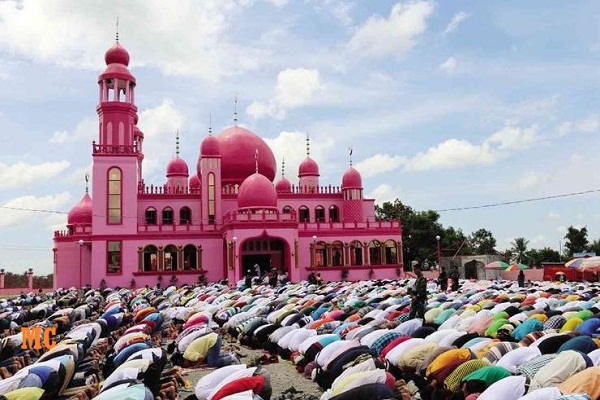The characteristics of Muslim minorities are among one the most fascinating conversations in the present era. The struggle of this minority team constantly provides various studies compared to the historic theme generally. At this event, the writer will attempt to discuss the Muslim minority in the Philippines, a nation shut to the biggest Muslim nation on the planet, Indonesia.
Muslims in the Philippines are known as Moro individuals. Based on the 2010 demographics, there are 5,127,084 Muslims in the Philippines, or about 5.57% of the total populace. They survive on the island of Mindanao and the Sulu Archipelago. The Moro individuals are also grouped right into twelve linguistic teams, the main ones being the Maranao, Maguindanao, Tausug, Yakan, and Samal. Farming and angling are their main livelihoods.
Background of the Entrance of Islam right into the Philippines
Islam concerned the Philippines through Muslim investors and preachers that visited Sulu in the 13th to 14th centuries. Amongst one of the most well-known preachers of this very early duration was Sheikh Makhdum that concerned Sulu in 1380 AD.
Right after, Muslim travelers from the Malay area complied with and established sultanates in Mindanao and Sulu.
The Spanish first set foot in the Philippines on March 16, 1521, on the island of Samar. The first exploration was led by Ferdinand Magellan. He called the new location “Philippines”, in recognition of King Philip II that was judged in Spain during that time.
The purpose of the arrival of the Spaniards was to develop colonies and transform the populace to Christianity.
The presence of this international country was opposed by 3 Muslim sultanates in the Southern: Sulu, Bayan, and Maguindanao.
The Spanish could dominate Manila, an Islamic sultanate ruled by family members of the Sultan of Brunei. However, they weren’t able to dominate the Islamic sultanates in the southern.
In its development, the dominant residents were nicknamed Indios by the Spanish, that later on determined themselves as Catholics and became residents of the Kingdom of Spain.
On the other hand, Muslims in the southern, called Moro by the Spaniards (because they share the same ideas as the Spanish Moors), have never really felt the same identification as Christians.
Consequently, for about 300 years there were sporadic battles between the Moros and the Spanish with the help of the Catholic Filipino populace.
The Turning Point of the Modern Age in the Philippines
In the second fifty percent of the 19th century, the Spanish colonial federal government changed its Christianization plan in the southerly Moro area. This change is entirely so that the area isn’t annexed by various other Western powers.
The decrease in agricultural manufacturing, mayhem in the marine profession, battle damage, and progressive seclusion of the area finally forced the sultans and information (warlords) of the southerly sultanates to approve a tranquility treaty with Spain. Although the real contract tends to make the southerly area right into a nest.
After the 19th century, the circumstance in the Philippines became very complicated. In 1896 and 1898 there was the Philippine Transformation, which triggered Spain to take out its soldiers from Muslim locations and focus them in the north. The transformation was sustained by the Unified Specifies, which started to disrupt the Spanish colonies in the Southern Pacific and the Caribbean.
Amidst the transformation, the revolutionary leader of the Philippines requested Moro’s support to unify versus Spain. However, the request was disregarded, as Muslims view either Spanish or Filipino Christians as their traditional opponents. This rejection will, later on, lead to brother or sister disputes in the future.
Spain finally left the Philippines, having delivered control of the area to the Unified Specifies after the 1898 Paris Contract.
America’s military supremacy forced the indomitable information to send to US guidelines. On the various other hands, American authorities leave Islam and Moro traditional legislation unblemished, as lengthy as they don’t contravene the US constitution.
As Filipinos started to learn to prepare self-government for self-reliance, sultans, datu and spiritual leaders petitioned American authorities. The request was through a request that their area not be consisted of in the planned independent specify. They wanted to remain a various country from the Christian Philippines, remaining under US protection, until they could develop a different country.
When the Republic of the Philippines was established in 1946, the Moros were integrated right into the political framework without previous settlement. This will certainly raise new problems in the Philippines.
In 1951, the Us senate Board, which examined the reasons for legislation and purchase infractions in the Moro location, wrapped up that an adding factor to the circumstance was that most Moros didn’t determine with Filipinos.
In the center Because of the unpredictability of the destiny of Filipino Muslims, the Islamic understanding movement has enhanced and is progressively noticeable. Every year numerous individuals perform the trip and go back to the culture with enhanced spiritual understanding and prestige.
New mosques and madrasas were established, with help from outside Muslim companies. Amongst them, the Egyptian federal government is offering scholarships for Moros to study at al-Azhar College in Cairo. Muslim instructors from abroad have also come to instruct in the Moro location for several years.
The solid beginning of the Islamic understanding movement in education and learning has also produced a feeling of satisfaction amongst Moro young people. Finally, a lot of young ulama were raised and participated in the Islamic movement.
Discrimination versus Muslims in the Philippines
At the same time, the disputes between Filipino Christians and Moro are intensified by several factors:
The influx of Christian settlers right into Muslim locations was unrestrained but sustained by the main federal government.
Continuous overlook of the financial and academic goals of the Moro.
Discrimination versus Moro Muslims in federal government workplaces.
The loss of political power of the Moro leaders in their initial area.
Dispute because of land grabs between Moro Christians and individuals.
These factors gradually enhanced equipped dispute between the Moro teams and Christian. Amidst this equipped dispute, the device, which was supposed to be the mediator, rather sided with the Christians.
The development of the Moro Freedom Front (MNLF)
To protect the rate of passion and social identification of the Moro, the Moro People’s Freedom Front was formed in 1969 by a team of modern young people. The team is led by Nur Misuari, a previous trainee activist at the College of the Philippines.
The development of the MNLF was a reaction to the dispute and discrimination that occurred after the Philippines’ nationwide integration and development program throughout the 1950-1960s. The program led to the influx of Christians to the Moro location (Mindanao, Sulu, and Palawan). The Moros defendant the government’s intentions behind the integration.
During that time, the MNLF was a company that had not yet established a clear chain of regulation. The Main Board of thirteen participants was charged with preparing an outline of diplomacy.
When Head of state Ferdinand Marcos enforced specific battle legislation in the Philippines in 1972, the dispute between Christians escalated and Muslims.
The MNLF managed to gather support from global Islamic leaders. In 1974, the MNLF Main Board issued a policy stating its intention to develop the independent Moro Republic.
With the support of Libya and participant nations of the Company of the Islamic Conference (OIC), the MNLF succeeded in reducing the Philippine federal government from (1973-to 1976). The stress finally forced the Philippine federal government to sign the Tripoli Contract which gave complete freedom to the Moro location.
The equipped dispute between the Moro and the federal government triggered many casualties and the success accomplished by the MNLF didn’t last lengthy. The Philippine federal government could not adhere to the Tripoli Treaty and the ceasefire could not be continued, so the battle began again in 1977.
In the same year, Misuari’s management was opposed by various other factions in the MNLF. Although the departments within the movement reflected essential ideological and ethnic distinctions, the various factions were established on a common ideological structure, specifically Islam.
The MNLF is more socially modern with solid support from ethnic Tausugs, while the Reformist Team MNLF (MNLF-RG) has support from the more conservative Marano, and the MNLF of spiritual and conservative aspects has a support base in Maguindanao.
Tranquility Initiatives between the Philippine Federal government and Moro Muslim Muslims
Moro resistance combined with diplomatic stress from Muslim nations gradually softened the Philippine federal government. The Philippine federal government has issued several pro-Muslim plans, although it could not instantly please the MNLF’s wishes.
In 1973, Arabic was used as a tool of direction in institutions attended by Muslims, and Islamic vacations were recognized as official Muslim vacations.
In 1977, the Nationwide Muslim Civil Code Act, with one article on muftis was passed, although not all judicial workplaces and sharia territories enforced the legislation.
In the following year, the Philippine Hajj Travel Authority was formed to arrange and facilitate the yearly Hajj; throughout the 1980s about 2 thousand individuals went for hajj every year.
Until 1980, most MNLF leaders and area commanders that had stated commitment to the federal government were awarded political nationwide opportunities and settings.
Consequently, in 1981 a Workplace of Islamic Events was formed.
In the area of education and learning, since 1982, the federal government is attempting to improve the madrasa system by incorporating several madrasas right into the system of education and learning Today there are numerous madrasas, although most of them are no greater than an intermediate degree.
Aside from madrasas, there’s also an increase in federal government scholarships for Moro trainees. Qualified Muslims are also commonly approved right into important settings in the Division of Justice and the Division of International Events.
The Philippine Government’s initiatives to proceed to pursue tranquility with the Moro individuals are gradually beginning to birth fruit in the 21st century.
On 27 March 2014, the federal government and the MNLF finally authorized a tranquility contract at the Governmental royal residence in Manila. The contract phone telephone calls for the development of a self-governing Moro federal government in Mindanao with its authorities force and budget. Additionally, a transitional body was also put to perform local political elections in 2016.
The Moro self-governing federal government will also receive 75 percent of tax obligations gathered and 75 percent of incomes from metal minerals in the area, as well as can supervise angling locations.
As a component of the deal, the MNLF also guaranteed to hand over tools used by 10-15 thousand Moro competitors.
The reconciliation of both sides was progressively seen when MNLF competitors and the Philippine Military assisted each various other in combating the Maute Militants that had terrorized the Marawi area for a previous couple of years.

